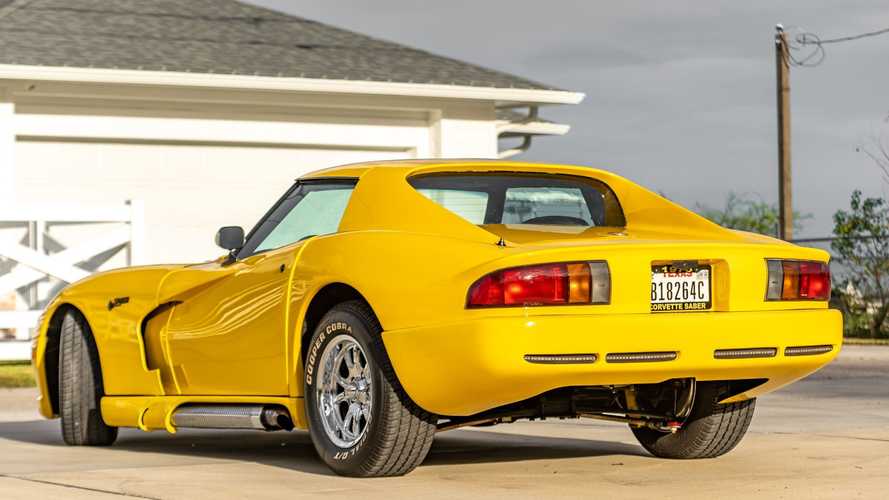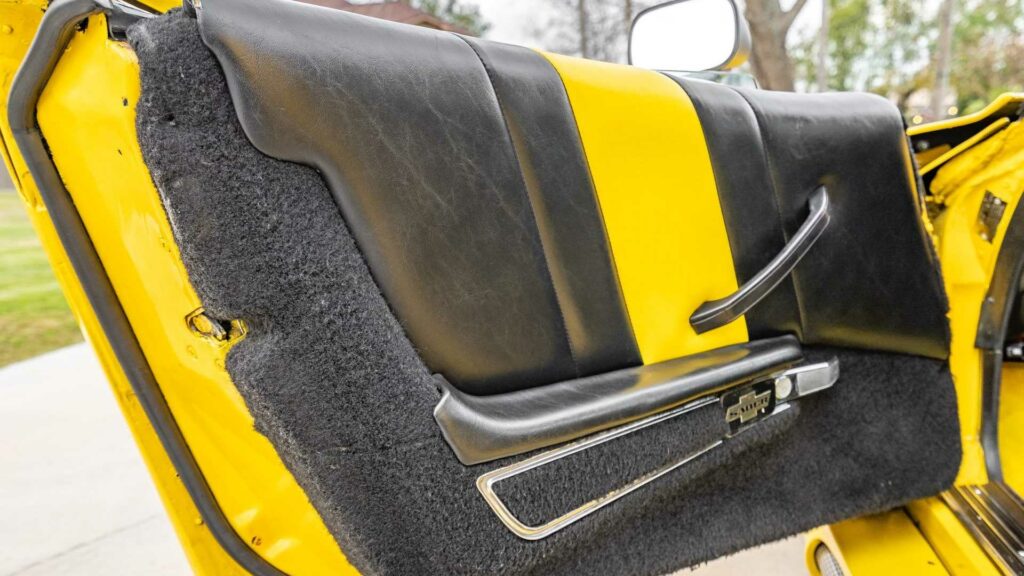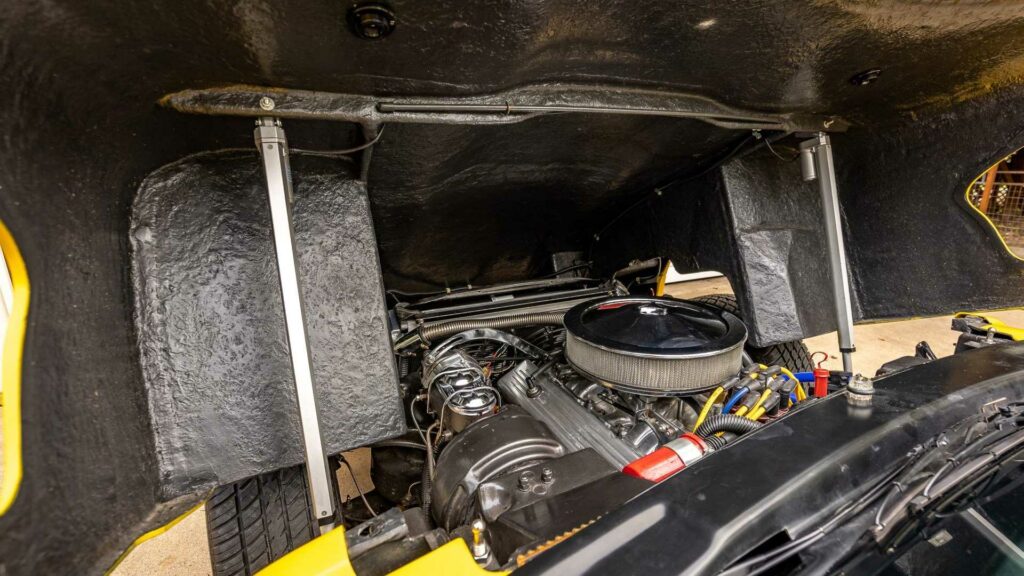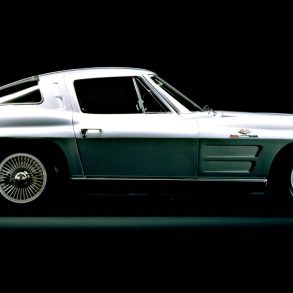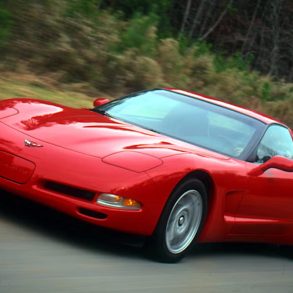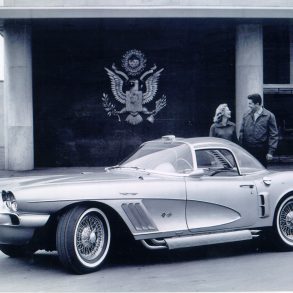A Bizarre-Yet-Awesome Viper Body Kit For Your Third-Generation Corvette Gives You the “BEST” Of Both Worlds
If You’ve Ever Considered Customizing Your Corvette To Look Like A Dodge Viper….You Aren’t Alone!
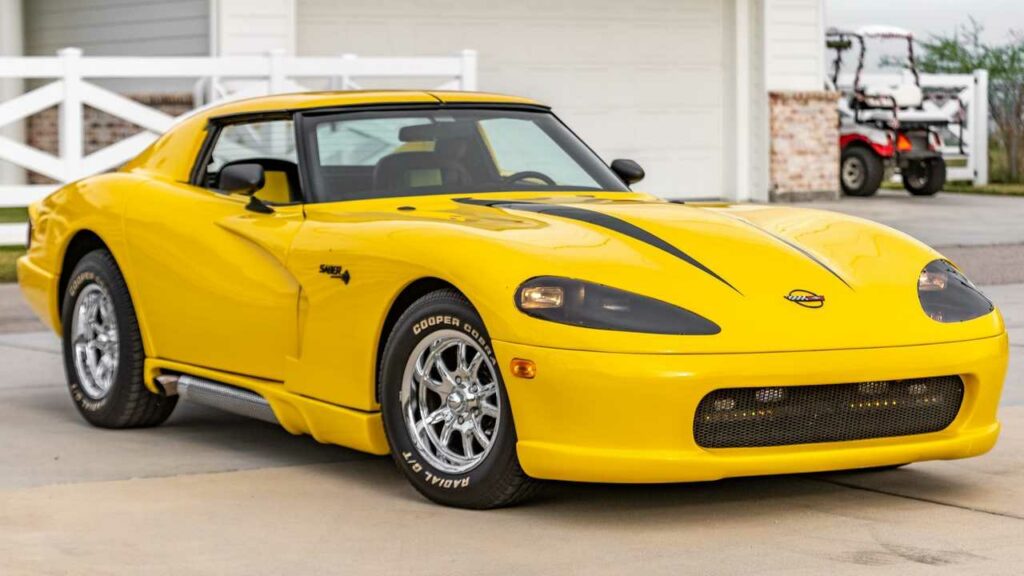
Okay, we admit it, we’re scratching our heads at this one a bit. While we don’t completely hate the look of this custom-built Corvette-that-would-be-Viper mashup, we can’t quite wrap our heads around it (VetteViper?…no, ViperVette!) either. On one hand, you’ve got a 1976 Chevrolet Corvette donor body (and let’s be honest friends, by 1976, the third-gen Corvettes were beginning to look a little dated anyway). On the other, you’ve got a body kit that is not exactly a Viper (though it tries really hard to be) fused with a Corvette whose proportions don’t quite sell the look. It’s interesting, and (if we’re being honest with ourselves) kind of awesome, yet it leaves us all feeling a little confused. Why would anyone want to do this, let alone actually go thru with it?
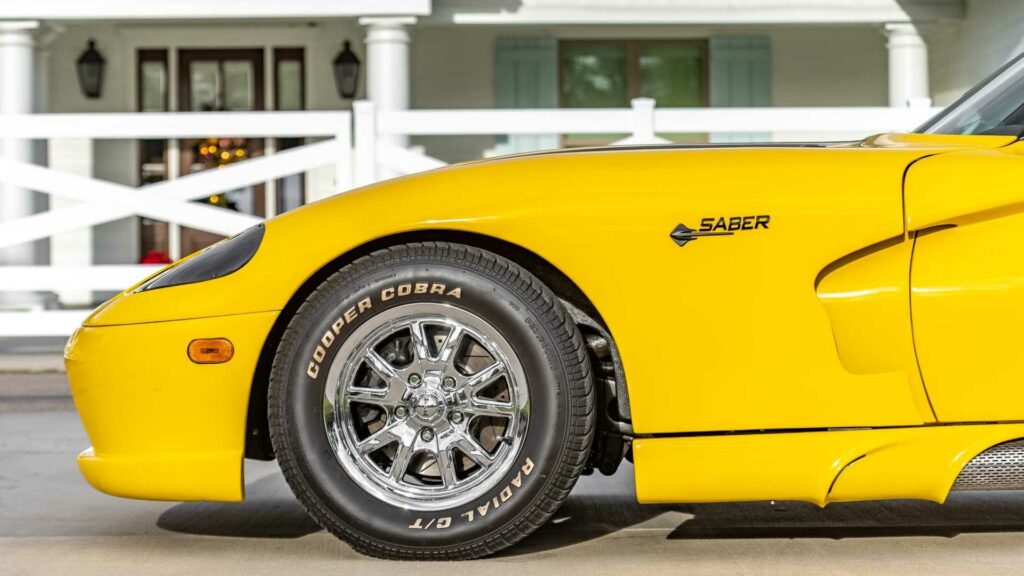
Here’s the interesting part. This 1976 Corvette isn’t meant to be seen as a first-generation Dodge Viper kit car/clone. This car has a plethora of badges (both inside and out) that clearly distinguish it as a “Corvette” of sorts. The front hood, for instance, has the fourth-generation Corvette’s hood emblem mounted front and center, while the front fenders are badged with the seventh-generation Corvette’s iconic “stingray” emblems, though each of these is topped with the word “Saber” is swept back lettering that looks like the “sporty” lettering decal kits you can buy at most discount auto stores. Pop open the doors to this car, and you are greeted by an interior that is unmistakably 1970’s era Corvette, though the interior door skins now sport a Chevrolet bowtie badge which frames the “Saber” moniker again.
And while we’re looking at the ViperVette’s interior, we can’t help but wonder if this one-of-a-kind ViperVette interior was embellished as an afterthought. The interior on this car is rough – and has not been restored – though there are now black and yellow seat covers (I think we’re talking either vinyl or the ever-popular Pleather) along with new door skins that straddle the top two-thirds of the door’s interior. Gaudy is a word…and there are many others, but gaudy is about the nicest thing we can say about this particular enhancement. As for the rest of the interior? It’s bone-freaking stock, right down to the steering wheel, which still sports the third-generation Corvette moniker at its center. The rest of the dashboard too looks untouched, leaving us to wonder why any effort was made to customize the seats and the doors when the rest of the interior was left stock? Our guess is that the owner wanted to extend some of the car’s yellow to the interior, and the pleather enhancements were the quickest, cheapest way to get there.
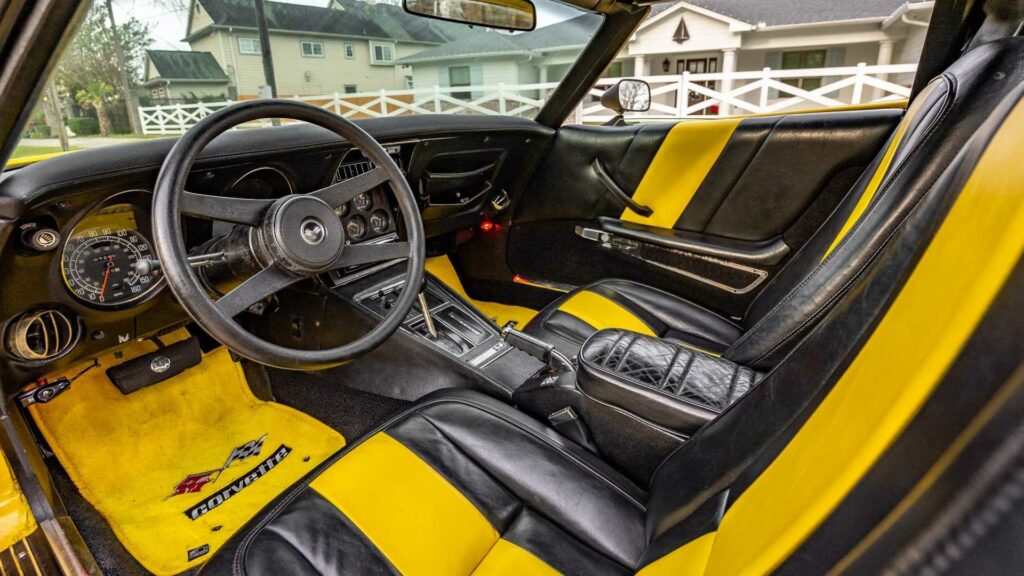
We don’t mean to sound harsh, but the interior is worth mentioning – and not in a favorable way – because it detracts from a custom build that, from the outside at least, looks fairly decent (for what it is.)
Before we get into the rest of the build, however, let’s step back and talk about how this car came to our attention in the first place. We first spotted this car on bringatrailer.com awhile back when a prospective seller attempted to list the car for sale. He/she failed to get what they were hoping for (reserve NOT met) and the car disappeared. When we went looking for it again, we found an article at Motor1.com, which inspired us to share this story here. Unfortunately, neither bringatrailer nor Motor1 gave us a lot to work with regarding the build itself, so we decided we’d focus instead on what could be gleaned from the images included with the posting, with the hopes that it would offer some insights into the thought process behind this build.
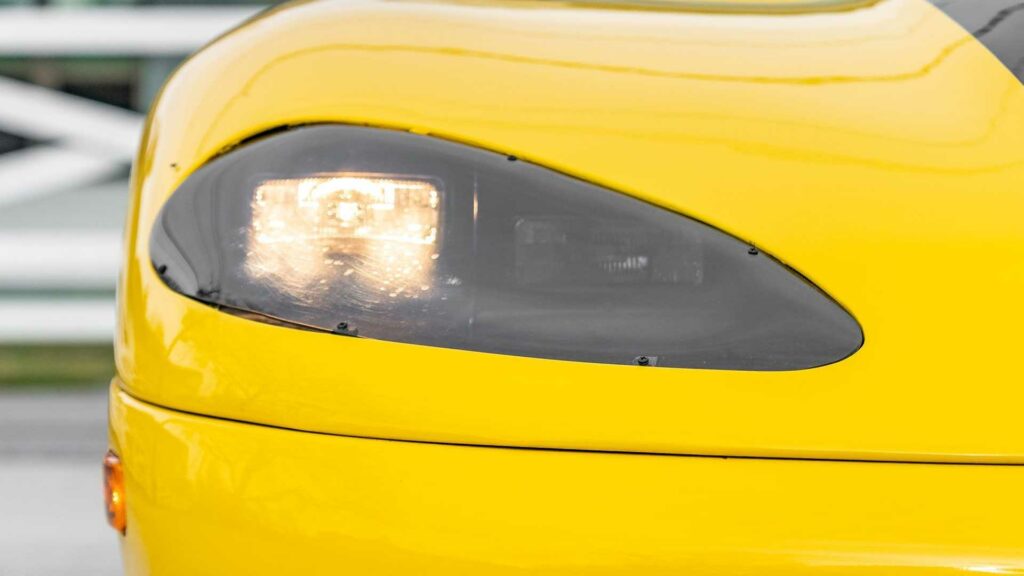
Okay, getting down to the nitty-gritty. We noted (when exploring the images of the interior) that this car had matching yellow paint on the door sills, the hinges, and in all the places a re-paint often misses, especially when using a less reputable company like Maaco. If this car was repainted after the custom bodywork, the painter took the time to dismantle the car so that those painting it could reach all the areas/spaces that are often difficult to reach/complete on a finished car. Why is this important? It suggests that whoever built this car knew enough to take it down to pieces, and to paint the car BEFORE reassembling it. It also suggests that there was a budget involved in the build….but more on that in a moment.
This build was allegedly completed by a company called RPM Design Limited and was assembled in the early 1990’s. The exterior is a fiberglass body kit that dramatically re-imagines the look of the seventies-era Corvette as a first-generation Dodge Viper. There are a number of styling elements that this body kit gets right – including the dramatic front fender coves that give the Viper it’s iconic look. The kit also includes a pair of side-exit exhaust pipes integrated into the car’s kick plates. While not an exact replica of those introduced on the original Viper, they are close enough to provide the same effect. The fact that many third-generation Corvettes were fitted with side pipes notwithstanding, this feature adds to the authentic look of the Viper body kit.
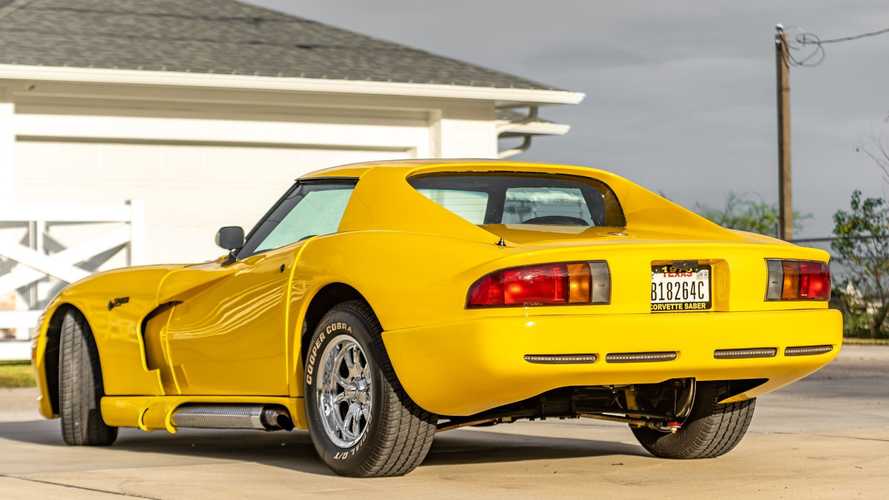
Also like the real Viper, the front end of the car is made up of a single-piece, clamshell hood that can be raised and lowered electronically. While a large clamshell hood wouldn’t be introduced on the Corvette until 1984, this detail looks correct on this car. In fact, from the front doors forward, this car has a lot of characteristics that could – from a certain distance – make observers believe they were seeing a Viper instead of a Corvette. However, the back half of the car is unmistakably Corvette, especially with its sugar-scoop rear window and its general coke bottle shape. Still, there are elements to the rear end that scream Viper too – from the protruding rear quarter panel assembly to those iconic, teardrop-shaped Viper taillights, there is enough customization back here to (again) confuse the casual observer into believing that what they see is what they get.
But it’s also these general details that cause the illusion to break down. Look closely at the car’s headlights and you’ll notice they’re cut in – sloppily some might say – and have fit and finish issues that are striking once you notice them. Likewise, the bodyside cove on the front fender, a feature that cleanly resolves itself on an actual Viper by coming to a point just before the leading edge of the driver and passenger doors. On this car, the cove (for reasons unknown) creates a similar shape but instead of resolving to a point, it ends with a flat, vertical edge that looks like the mating edge to another panel, only there is no other panel. It just sort of hangs there looking unresolved and out of place.
The other discernable difference between the Viper and the “Saber” (why not Mamba?) is the powerplant. Look under the hood and you won’t find a beefy 10-cylinder engine like the one used in an actual Viper. Instead, you find a 5.7-liter Chevy V8 that was installed during the build. Worse still, the car is equipped with a three-speed AUTOMATIC transmission. The car, which produces 350 horsepower and a respectable 380 lb/ft of torque simply lacks the insane power – or the ability to deliver it to the rear wheels – that made the early Dodge Vipers such a fun car to own and drive in the first place. Sure this thing will go, but it is limited….just like the rest of the build.
Allegedly, the other of these cars sold previously for over $30,000. We don’t have the specifics of when, but we do know that when this example was listed at bringatrailer.com, it never got past $15k, which was below the reserve set by the current owner. Our guess is that this car simply doesn’t have the horsepower, handling, performance or curb appeal to warrant the kinds of bucks that it might have gained back when you couldn’t touch a real Viper for less than $50k. Now that there are examples that sell for less than this replica, why would anyone spend money on a 45-year-old C3 Corvette with a Viper body kit when they could get the real thing for the same – or maybe even less – money? The answer, as proved by the fact that this car can’t raise the money wanted, is that it simply CAN’T.
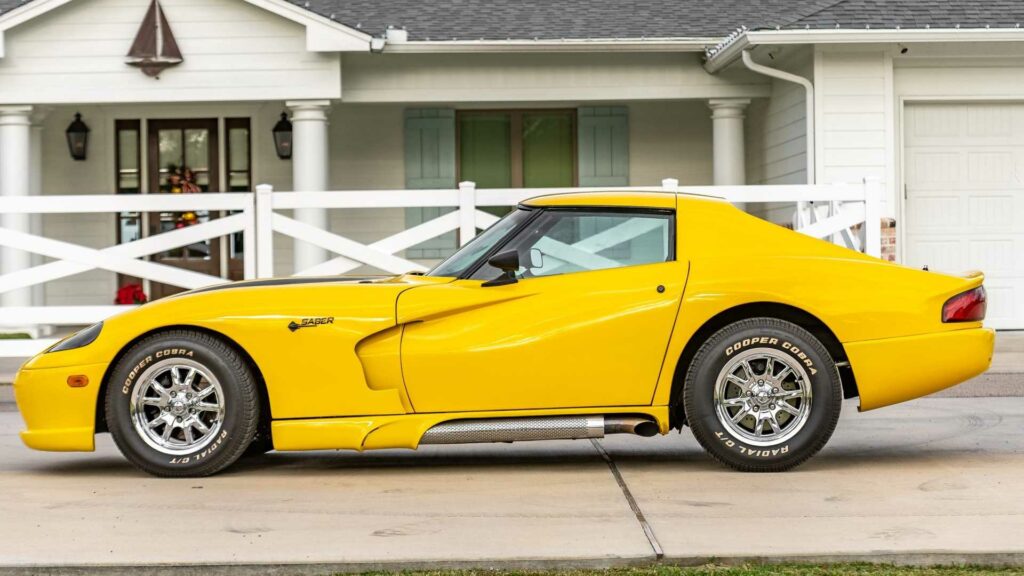
Maybe next time, design a body kit that mimics a car that will hold its value – and not depreciate to a point where the real deal is cheaper than the clone. Still, we give you top marks for effort, for ingenuity, and for the sheer daring to build a one-of-a-kind (okay, two-of-a-kind) ViperVette.


